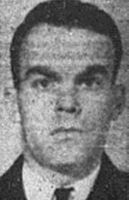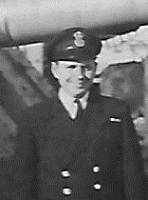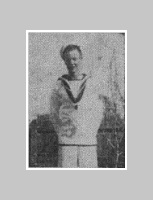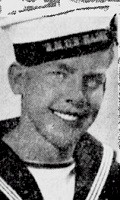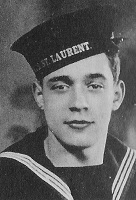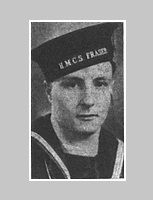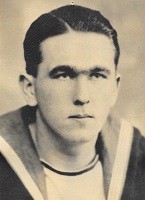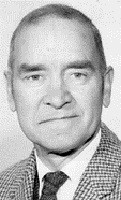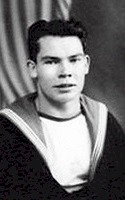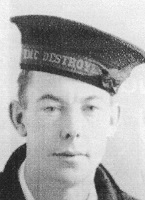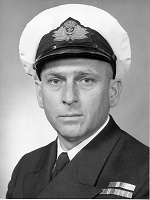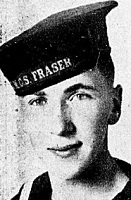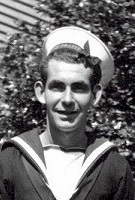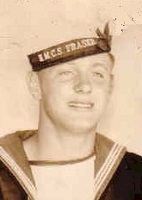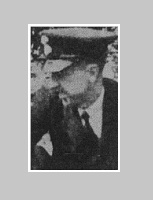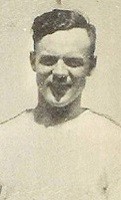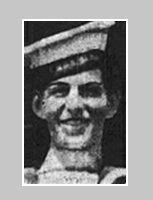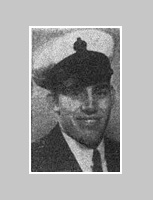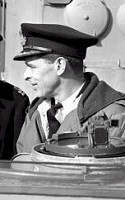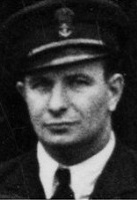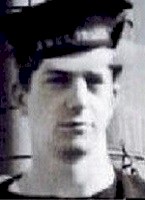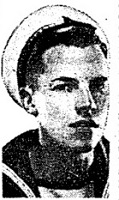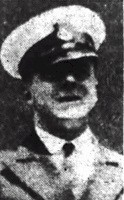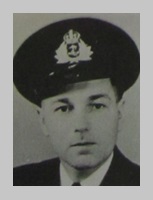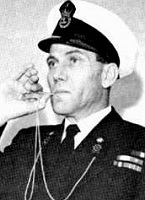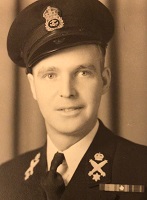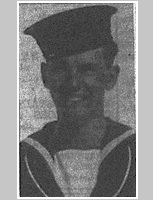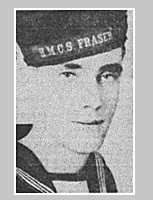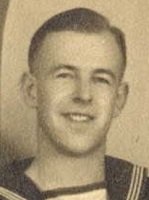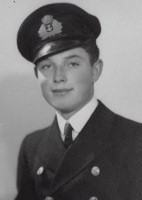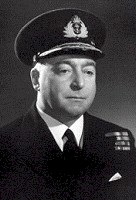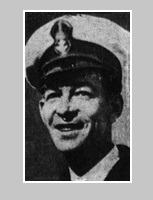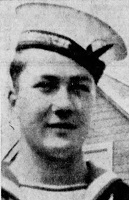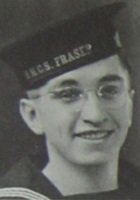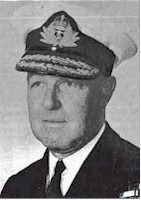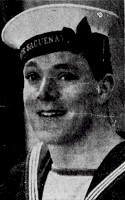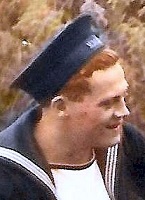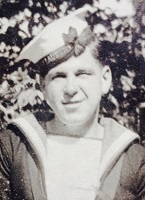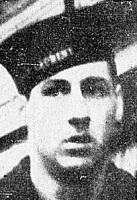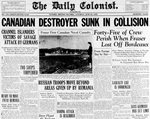|

HMCS
FRASER H48
C
- Class Destroyer (RN)
River
Class Destroyer (RCN)
|
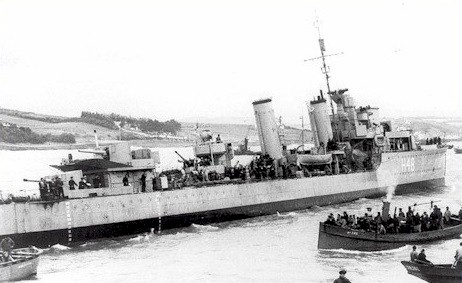
HMCS FRASER on 22 Jun 1940, shortly before her loss
From the flickr
photo collection of Don Gorham
Click on the
above photo to view a larger image |
|
Battle honours and
Awards: Atlantic 1939-40
|
|
Laid down: 01
Dec
1930
Launched: 29
Sep 1931
Commissioned: 15
Apr 1932
|
Transferred to RCN: 20
Oct 1936
Commissioned:
17 Feb 1937
Sunk: 25
Jun 1940
|
The history of HMCS
FRASER H48 - from an
article in the Daily Colonist 28 Jun 1957
The first HMCS
FRASER was one of two destroyers acquired from the British Admiralty by the
Canadian Navy to replace two over-age destroyers, HMCS CHAMPLAIN and
VANCOUVER.
One, the CYGENT, was to become the first HMCS ST LAURENT, while the other,
the CRESCENT, was renamed HMCS FRASER.
Both destroyers
were laid down in the Royal Navy's 1929 program.
Construction began
in 1930 and they were launched the same day, Sept. 29, 1931.
The two warships
were commissioned into the RCN on Feb. 17, 1937. Captain (later
rear-admiral) V.G. Brodeur was the FRASER's first commanding officer. The
destroyers sailed for Canada from Portland, Dorset, on March 12 of the same
year. Twelve days later they entered Carlisle Bay, Barbados, to rendezvous
with HMC Ships SKEENA and SAGUENAY. On March 25, Captain Brodeur exchanged
command with Commander (later vice-admiral) H.E. Reid of the Skeena. At
Barbados, the FRASER and the St. Laurent parted company, the St. Laurent
proceeding to Halifax in company with the SKEENA and SAGUENAY, and the FRASER
sailing for Esquimalt, B.C. where she arrived on May 3.
For the few
remaining pre-war years, the FRASER carried out a busy schedule of training
cruises. In the early months of 1938 she sailed south to join Halifax-based
units at Panama for a cruise down the west coast of South America. A year
later, under her third and last commanding officer, Commander (later
rear-admiral) W.B. Creery, she sailed with other Pacific coast units through
the Panama Canal for exercises in West Indies waters.
Other activities
of the FRASER included the embarkation of Lord Tweedsmuir, Governor-General
of Canada, during his 1937 visit to British Columbia; participation in the
escort of President Roosevelt during his visit to the province in September
of the same year, and in the four-destroyer escort of Their Majesties King
George VI and Queen Elizabeth during their crossing to Victoria in May,
1939, during the Royal visit. A little over three months later, Canada was
at war. On August 31, four destroyers, FRASER, OTTAWA, ST LAURENT and RESTIGOUCHE, lay at anchor just off Coal Harbor in Vancouver, where they
were to take part in the celebrations for the city's annual exhibition.
The same day a
message was received from Ottawa ordering FRASER and St. Laurent to Halifax.
The ships were rapidly prepared. One hour and 49 minutes after the orders
had been received, the destroyers were steaming at high speed for the Panama
Canal.
Canada declared
war on Sept. 10, while they were still en route for their destination. The FRASER
arrived at Halifax Sept. 14, exactly 14 days and 30 minutes after
weighing anchor at Vancouver.
Joining the Halifax Force, the FRASER spent the next few months on convoy
duties. Among the vessels she assisted in escorting into Halifax Harbour
were ships bringing gold bullion from England to Canada for safekeeping. In
March, 1940, the ship was ordered south to join the Jamaica force in the
Caribbean where the allied naval forces had been bottling up German shipping
caught in that area by the war.
However, her time
with this force was short. The Nazi tide was rolling down to the coastline
of western Europe and Canadian ships were urgently requested to help protect
British shores against threatening invasion, and keep open the vital supply
routes to the British Isles.
In the latter part
of May, 1940, FRASER was one of the Canadian destroyers sent overseas.
Following her arrival, she was assigned mainly to convoy duties, including
the escort of troopships carrying Canadian soldiers to the United Kingdom.
On June 21, the
day that Hitler imposed the armistice of Compiegne, the FRASER was
dispatched to assist in the evacuation of St. Jean de Luz, a small town on
the Bay of Biscayne coast near the Franco-Spanish border and one of the last
outlets for refugees attempting to leave the continent. On the evening of
June 22, she carried out anti-submarine patrols in the bay off the town, and
later helped cover the vessels arriving to embark the refugees. At dawn on
June 23, she was ordered northwards to Arcachon, on the Biscay coast
southwest of Bordeaux. Her commanding officer , Commander Creery, carried
two secret hand messages; one addressed to Sir Ronald Campbell, the British
Ambassador to France, and the other to Admiral Darlan. It was believed that
Sir Ronald was in Arcachon at the time.
As she approached
the coastal town, the FRASER sighted a small sardine boat tossing in the
rain-swept waves. When she came alongside, it was found that the boat was
carrying the British ambassador, The Canadian Minister to France
(Lieutenant-Colonel Georges P. Vanier) and the South African Minister to
France, as well as naval, military and air attaches. The FRASER returned to
St. Jean de Luz where the rescued diplomatic personnel were transferred to
the British cruiser Galatea.
At St. Jean de
Luz, the evacuation continued smoothly and efficiently and by June 23 the
evacuation was practically complete. The first warships in the harbour were
the FRASER, another Canadian destroyer, the RESTIGOUCHE, and the British
cruiser CALCUTTA. When they stood out to sea shortly after, the FRASER had
embarked five officers and 33 men of the Royal Navy, one British army
officer, and four Polish seamen.
The three ships
next headed north toward the mouth of the Gironde River, up which lay the
port of Bordeaux. German vessels had been reported in the area, but when the
Canadian and British units arrived nothing was seen of the enemy, and the
CALCUTTA ordered a return to the United Kingdom.
The
FRASER was
never to reach her destination for, late that night, June 25, she was in
collision with the CALCUTTA while the ships were forming into line ahead.
Shortly after 8:30 p.m. 12 miles due west of Pointe de la Coubre light at
the Gironde River mouth, the Calcutta's bows sliced into the FRASER'S
starboard side, cutting through to the centre line of the destroyer and
stopping inside the crushed wheelhouse. The FRASER'S bow broke off at the
forecastle while the aft portion, engines still going astern in obedience to
the order which sought to avoid the collision, moved quickly off the
cruiser's port side.
The
FRASER went to
the bottom in the early hours of June 26 - Canada's first naval loss of the
Second World War. Rescue efforts by the RESTIGOUCHE and CALCUTTA, and by the
officers and men of the FRASER themselves saved many, but 65 of her ship's
company were lost. Most of those who survived went down four months later,
on October 23, with HMCS MARGAREE.
Photos and Documents
The
Loss of HMCS FRASER
Commanding Officers
Capt Victor Gabriel Brodeur, CB, CBE, RCN - 17 Feb 1937 - 24 Mar 1937
Cdr Howard Emerson Reid, CB,
RCN - 25 Mar 1937 - 31 Aug 1938
Cdr Wallace Bourchier Creery, CBE,
RCN - 01 Sep 1938 - 25 Jun 1940
 In memory of those who made the ultimate sacrifice
In memory of those who made the ultimate sacrifice

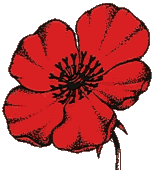 Lest We Forget
Lest We Forget 
|

ARCHER,
Arthur E.
LS LTO, RCN
MPK - 25 Jun 1940 |

BARRETT, Osbourne
VCPO, RCN
MPK - 25 Jun 1940 |

BAXTER,
Richard A
PO, RCN
MPK - 25 Jun 1940 |

BEVINGTON,
Sidney
PO, Royal Navy
killed - 25 Jun 1940 |

BISSON,
George P.
Sto 1c, RCN
MPK - 25 Jun 1940 |
|

BODGER,
Richard R.
PO, RCN
MPK - 25 Jun 1940 |

BROWN,
Hugh S.
Shpwt 3c, RCN
MPK - 25 Jun 1940 |
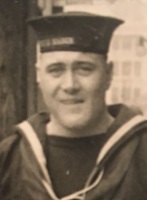
CALL,
George E.
Sto PO, RCN
DOW - 04 Jul 1940 |

CARLTON,
Douglas A.
AB, RCN
MPK - 25 Jun 1940 |

CAROLAN,
Robert E.
Sto 1c, RCN
MPK - 25 Jun 1940 |
|

CHISHOLM,
Frederick
OS, Royal Navy
MPK - 25 Jun 1940 |

CLARK,
Frank
OS, Royal Navy
MPK - 25 Jun 1940 |

CLARK,
John R.
OS, RCN
MPK - 25 Jun 1940 |

CLARKE,
William
OS, RCN
MPK - 25 Jun 1940 |
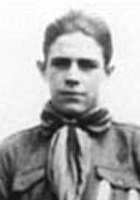
CONWAY,
Archibald
LS GL, RCN
MPK - 25 Jun 1940 |
|

COOK,
John E.
Sto 1c, RCN
MPK - 25 Jun 1940 |

COX,
Richard H.
OS, Royal Navy
killed - 25 Jun 1940 |

DAVIES,
Leonard L.
OS, D/JX 188660, RN
MPK - 25 Jun 1940 |

EDWARDS,
Edward
OS, Royal Navy
MPK - 25 Jun 1940 |

ELLIS,
Verdun G.
OS, Royal Navy
MPK - 25 Jun 1940 |
|

FECTEAU, Ernest
Ch OA, RCN
MPK - 25 Jun 1940 |

FORD,
Malgwyn C.
AB LTO, RCN
MPK - 25 Jun 1940
|

GAGNON,
William M.
Sto 1c, RCN
MPK - 25 Jun 1940 |

GILL,
James
OS, Royal Navy
MPK - 25 Jun 1940 |

HICKS,
Earl C.
PO Ck (S), RCN
MPK - 25 Jun 1940 |
|

HINDS,
Edward
OS, Royal Navy
MPK - 25 Jun 1940 |
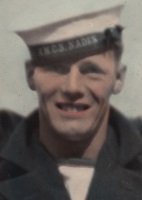
JOHNSTON,
James M.
AB, RCN
MPK - 25 Jun 1940 |

JONES,
Glyn
OS, Royal Navy
MPK - 25 Jun 1940 |

KELLY,
John R.
AB ST, RCN
MPK - 25 Jun 1940 |

KEMPSON, Walter M.
OS, Royal Navy
MPK - 25 Jun 1940 |
|

KENNEDY, Archibald
AB LR III, RCN
MPK - 25 Jun 1940 |
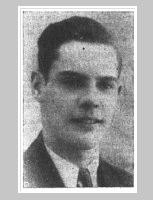
KENNEDY,
Robert M.
AB, RCN
MPK - 25 Jun 1940 |

KOWBEL,
Harry
AB, RCN
killed - 25 Jun 1940 |

LEATHERBY,
Frederick
LS, Royal Navy
MPK - 25 Jun 1940 |

LEVICK,
Cyril L.
L/SA, Royal Navy
MPK - 25 Jun 1940 |
|

LEVINE,
Reginald L.
OS, Royal Navy
MPK - 25 Jun 1940 |
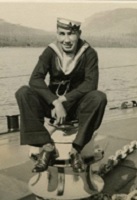
LOGAN,
Clifford M.
AB QR III, RCN
MPK - 25 Jun 1940 |
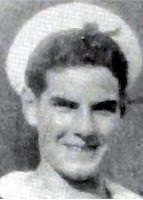
MACKLIN,
Franklin G.
L/Sig, RCN
MPK - 25 Jun 1940 |
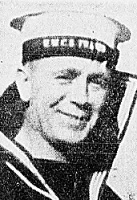
MARCOTTE,
Joseph
AB GL2, RCN
MPK - 25 Jun 1940 |

MARKS, Walter H.
OS, Royal Navy
MPK - 25 Jun 1940 |
|
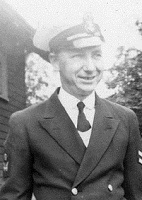
MARR,
David
PO Tel, RCN
MPK - 25 Jun 1940
|

MCDOWELL, Andrew
Sto 2c, RCNVR
MPK - 25 Jun 1940
|

MCGIBNEY,
Frank
EA 4c, RCN
MPK - 25 Jun 1940
|

MCLACHLAN,
George
Sto 2c, RCN
MPK - 25 Jun 1940
|

MILLER,
Lloyd G.
AB, RCN
MPK - 25 Jun 1940
|
|
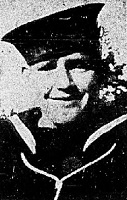
MITCHELL,
Donald W.
OS, RCN
MPK - 25 Jun 1940
|
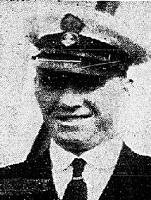
MOORE,
Arthur J.
Yeoman of Signals, RCN
MPK - 25 Jun 1940
|
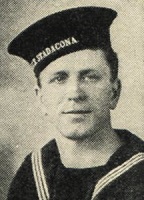
MORE,
Andrew
AB, RCNVR
MPK - 25 Jun 1940
|

MORRIS,
Raymond H.
OS, Royal Navy
killed - 25 Jun 1940
|

PADDON,
James W.
AB, RCN
MPK - 25 Jun 1940
|
|

PAUL,
Gordon M.
AB ST, RCNVR
MPK - 25 Jun 1940
|

POMEROY,
Alfred J.
CPO, Royal Navy
killed - 25 Jun 1940
|
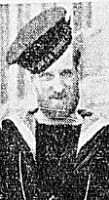
PRATT,
William R.
AB ST, RCNVR
MPK - 25 Jun 1940
|

PRICE,
John R.
CPO TGM, RCN
MPK - 25 Jun 1940
|

REES,
Henry V.
OS, Royal Navy
MPK - 25 Jun 1940
|
|

ROSS,
William G.
Sto PO, RCNVR
MPK - 25 Jun 1940
|

SAUNDERS,
Arthur R.
AB, RCN
MPK - 25 Jun 1940
|
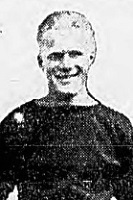
SCIBAN,
Henry A.
AB, 3097, RCN
MPK - 25 Jun 1940
|

SENYK,
Steven
Sto 2c, RCN
MPK - 25 Jun 1940
|

SMITH,
Charles D.
OS, RCN
MPK - 25 Jun 1940
|
|

SWINDLEHURST,
John
Ord. Sig, RCNVR
MPK - 25 Jun 1940
|

WAGAR,
Donald F.
AB A/SD, RCN
MPK - 25 Jun 1940
|
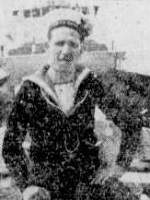
WATT,
Thomas
Sto PO, RCN
MPK - 25 Jun 1940
|

WESTCOTT,
James H.
AB LRII, RCN
Died - 06 Nov 1939
|
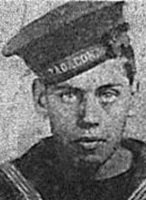
WHITE,
Donald H.
OS, RCN
MPK - 25 Jun 1940
|
|

WRIGHT,
Richard C. F.
Sto 2c, RCN
MPK - 25 Jun 1940
|
|
|
|
|
 In memory of those who have crossed the bar
In memory of those who have crossed the bar 
They shall not be
forgotten
(s)
- Survived the sinking of HMCS FRASER
A
B
C
|
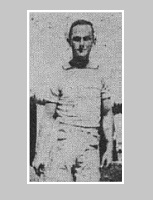
Calder,
William A.
|

Campbell,
Donald L. (s)
|

Carter,
Victor E.
|
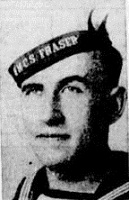
Clarke,
Ralph L. (s)
|
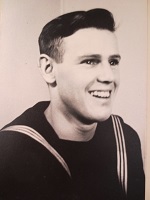
Cole,
John W. (s)
|
|
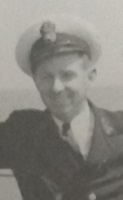
Cole, Leslie
|
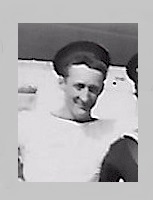
Colegrave,
Bruce E.
|
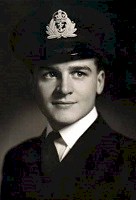
Cosh,
Digby R.B.
|
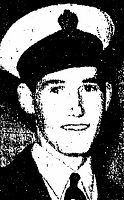
Cotey, John
B.
|

Crane,
Alan C. (s)
|
|
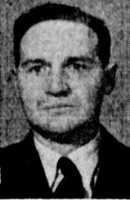
Crawford,
Gordon R.
|

Crisp,
Nelson W.
|
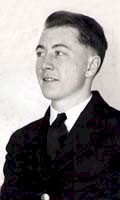
Crossley,
Sidney R.
|
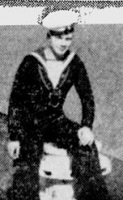
Cunningham, Edward
A. (s)
|
|
D
F
G
H
J
K
L
M
|
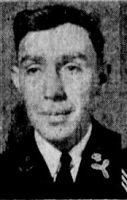
MacDonald,
Herbert C.
|

MacDonald,
John S.
|
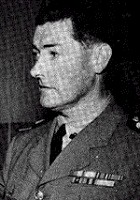
MacGillivray,
John
|
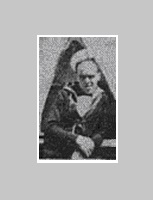
Mackie,
Ronald (s)
|

Manfield,
William A.
|
|
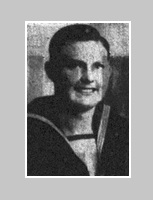
Mara,
John J. (s)
|
Mann,
Clement C.W.
|

Marryatt,
Ralph E.
|
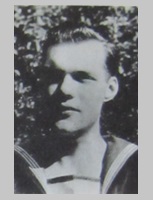
Matthews,
Thomas H.
|

McAlister,
William J. (s)
|
|

McLean,
Timothy B. (s)
|

McMurtry,
Alexander (s)
|

McNally,
William H.
|

McNeney,
James R.
|
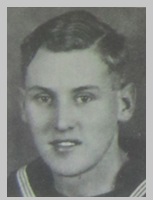
Meadows,
Charles B. (s)
|
|

Miller,
James B. (s)
|
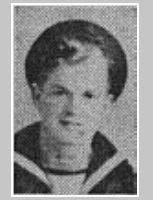
Mills,
Frederick J. (s)
|

Molyard,
John M. (s)
|
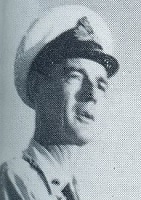
Moore,
Ernest E.
|

Murray,
Wallace H. (s)
|
|
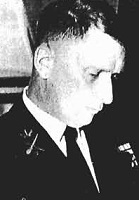
Myles,
Ronald
|
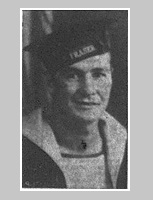
Mylrea,
Russell E.
|
|
|
|
O
P
R
S
T
U
W
Y
Former Crew Members
|
Knowlton,
John Grant, LCdr (E), RCN - 01 Feb 1937 (Stand by) / 17 Feb 1937
|
Laman,
Albert Curil Kirkland, Lt (E), RN
MacConnell,
Clifford (s)  |
Moore,
Ewan Archibald, 2828, RCN (s) |
Photos and Documents
|
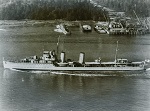
|
HMCS FRASER H48
|
|

|
HMCS FRASER H48
Photo's
from the Flickr collection of Ron Bell
|
|

|
HMCS FRASER H48
From the collection of Robert Macklem
Courtesy of Bob Macklem
|
|

|
HMCS FRASER H48 at Nanoose Bay, BC
From the collection of John James Ashworth Clarke
Courtesy of Eric Clarke |
|

|
HMCS FRASER H48 at Victoria, BC
From the collection of John James Ashworth Clarke
Courtesy of Eric Clarke |
|

|
Sailors from HMCS FRASER H48 ashore in Bermuda
(pre-war)
Bill Gagnon 2nd from right
From the collection of William (Bill) Gagnon
Courtesy of Ian McDonald |
|

|
HMCS FRASER's mascot - date unknown
From the collection of Malgwyn Ford
Courtesy of Jerry Ford |
|

|
Sailors in 9 Mess, HMCS FRASER H48 - Malgwyn Ford
on right with no shirt
From the collection of Malgwyn Ford
Courtesy of Jerry Ford |
|

|
Crossing the Equator on HMCS FRASER H48 - date
unknown
From the collection of Malgwyn Ford
Courtesy of Jerry Ford |
|

|
HMCS FRASER H48 iced up
From the collection of Malgwyn Ford
Courtesy of Jerry Ford |
|

|
LTO Malgwyn Ford, HMCS FRASER H48, San Diego 1938
From the collection of Malgwyn Ford
Courtesy of Jerry Ford |
|

|
HMCS FRASER H48
Photo's
from the Flickr collection of Ron Bell
|
|

|
Memorial to those who died when HMCS FRASER K48 was
sunk
From the collection of Arthur Gordon Banfield
Courtesy of Gordon Rhymes |
|

|
HMCS FRASER H48
From the collection of Wilfred Bowen
Courtesy of Abbie Gourgon |
|

|
HMCS FRASER H48 leaving Esquimalt Harbour 1937
From the collection of Jim Silvester
Courtesy of Jim Silvester
Click
here to view another copy of this photo |
|

|
HMCS FRASER H48 in Esquimalt - 1937
Courtesy of Mike O'Keefe |
|

|
In happier times - HMCS FRASER sailors Seaman
Kenneth Kyle (right) and friend Willie (William Goldsmith)
"Farewell to Seattle"
From the collection of Kenneth Kyle
Courtesy of Maureen Pepin
Below is an
excerpt from a unknown newspaper:
"Netha
Silver and Thelma Mc Donald, two Halifax girls, heard together the news
that their fiances were missing. Dan Willis, of Hanna, Alta., and Ken
Kyle, of Moose Jaw, had planned to be married in a double wedding when
the Margaree arrived in port. Archie Kennedy, of Victoria, B.C., who was
to have been best man, died in the FRASER sinking, which the two other
sailors survived." |
(WG08) HMCS Fraser envelope mailed from Kingston Jamaica 17 Feb 1939
(WG09) HMCS Fraser Christmas card
(WG10-WG11)
Articles on the Loss of HMCS FRASER - The Daily Colonist 29 Jun 1940
From the
collection of William Miller Gagnon,
Stoker 1st Class, RCN
Courtesy of Ian McDonald
HOME PAGE SHIP INDEX
CONTACT
|










































